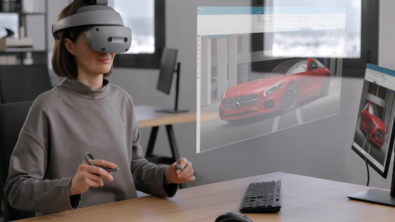The Future of Medical Devices and Pharmaceuticals with Jim Thompson – Part 3 – Summary

In the first part of my conversation with Jim Thompson and Dale Tutt, we discussed the ongoing impacts of the COVID-19 pandemic on the medical device and pharmaceutical industries and covered a few other trends in supply chains, development methods, and more. And in part 2, we turned the conversation to talk about the growing integration of electronics in medical devices, which mirrors trends in other industries.

In part 3, we pick up the conversation by exploring how Digital Twin adoption differs in the medical device and pharmaceutical industries as compared to other industries, such as consumer electronics. Dale speculated that the discrete nature of medical devices made the segment a more natural fit for Digital Twin adoption in product development and production. Jim expanded on this thought, noting that digitalization has played a key role in the development of complex devices like modern MRI machines and surgical robotics.
Digitalization and the Digital Twin have helped medical device manufacturers adopt systems engineering approaches to the development of these complex devices while also incorporating software engineering to a greater extent. Jim noted that the integration between hardware and software development is increasingly important as devices rely on a combination of these components to enable the features and functionality demanded in today’s market.
We then turn our attention to the future of digitalization in the industry, discussing how digitalization, artificial intelligence, and the Industrial Metaverse may evolve and support medical applications. Here, the pharmaceutical industry is investigating the use of AI and the Digital Twin of human anatomy to develop more effective drugs with fewer side effects. In the future, it may even become possible to create personalized therapies based on the Digital Twin of a part of the individual’s anatomy and genetics.
Naturally, this led to a discussion of the importance of data security and regulatory oversight when handling patient data of this sensitivity. Dale made a point to emphasize that health data should be treated with the same care as the person it represents. Thus, while the potential of AI and the Digital Twin to enhance drug development and proactive health management is great, patient safety and security must remain as the top priority.
Moreover, digital transformation and the adoption of advanced technologies have the potential to transform healthcare and improve patient outcomes, but careful implementation is required. AI and the Digital Twin can help create more effective therapies and devices, but must be robust and highly secure against malicious cyberattacks. Through a measured approach, continued investment in digitalization can help medical device and pharmaceutical companies deliver efficient and effective care in the hospital and in the home.
For more on this topic, check out the podcast here, here, or maybe even here!
Siemens Digital Industries Software helps organizations of all sizes digitally transform using software, hardware and services from the Siemens Xcelerator business platform. Siemens’ software and the comprehensive digital twin enable companies to optimize their design, engineering and manufacturing processes to turn today’s ideas into the sustainable products of the future. From chips to entire systems, from product to process, across all industries. Siemens Digital Industries Software – Accelerating transformation.


